by Aminu Abdullahi in Big Data on November 1, 2022
Data preparation is the transformation and standardization of data before it is analyzed by a machine learning model. Here are the top tools of 2022 to help you get the job done.
More and more companies are leveraging data for competitive advantage, especially as big data and artificial intelligence drive digital transformation across industries. Without data preparation solutions in place, these companies cannot effectively put data to use for AI/ML and other emerging technologies.
For the modern company that wants to advance its processes and products, data is the new oil and data preparation is the new refining process. Learn about some of the top data preparation solutions for success in this guide.
Best data preparation software
The best data preparation tools allow you to extract, transform and load your data while doing other important tasks like looking for duplicates, aggregating large volumes of data into more manageable chunks, and cleansing inaccurate or incomplete records. This comprehensive guide outlines the best data preparation software based on key features and usability.
Trifacta Wrangler
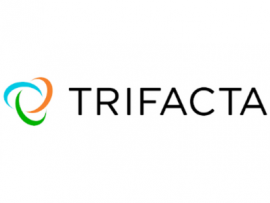
Trifacta Wrangler is a self-service business intelligence tool that helps data engineers, data analysts and data scientists to prepare and explore their data. The platform specifically allows users to transform data, ensure quality and automate data pipelines.
SEE: Hiring kit: Data scientist (TechRepublic Premium)
With Trifacta Wrangler, you can use a drag-and-drop interface to get your data into the right shape for analysis. This all-in-one platform enables users to merge and filter data sets, transform messy data into tables with readable formats, combine data sources and produce new records from existing ones.
Trifacta offers these three pricing plans: Starter, which is $80 per user per month with an annual contract; Professional, which is $4,950 per user per year; and Enterprise, with pricing information available upon request.
Features
- Active data profiling to automatically identify data set formats, schemas, specific attributes, relationships and related metadata
- Transform-by-example features for self-service data reformatting
- Machine learning guided interface
- Cluster standardization for comparable data sets
- Shareable recipes, macros, data flows and templates
Pros
- Graphical user interface that is easy to use and understand
- Low-code features for non-technical users
- Interactive platform format
- Easily integrates current processes with SDKs and OpenAPI standards in various languages
- Compatible with many different cloud data warehouse, data lake and lakehouse needs
Cons
- Slow platform speeds
- Inefficient data sampling method
Datameer
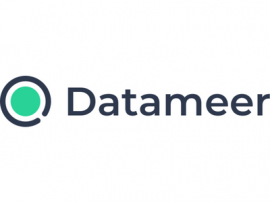
Datameer is a software-as-a-service data preparation and analytics platform that runs on Snowflake. It’s designed for business users, data engineers, analytics engineers, analysts and data scientists to prepare and analyze their data.
It combines the scalability, flexibility and power of cloud computing with a visual UI and robust features to simplify data preparation, visualization, exploration, cataloging and analysis. This solution allows practitioners to perform data cleansing, blending, grouping and organization, enrichment, transformation and validation at scale.
Datameer offers two pricing plans. The Personal plan is $100 per month for single users. Team pricing is available on-demand for prospective buyers that want to add multiple users.
Features
- Data blending using join and union functions
- Functions to build value-added columns, including math, statistical, trigonometric, mining and path construction
- Data grouping and organization feature for data classification and record aggregation
- No-code and low-code data transformation interfaces
Pros
- No-code analytics
- Easily connects to source data using connectors
- Allows collaboration between technical and non-technical teams
- Efficient, Excel-like interface
- Extensive data source connectivity
- Simple structured and unstructured data management
Cons
- Multiple tabs make it harder to focus
- Video lessons and tutorials are too long
- Visualization can be improved
Altair Monarch
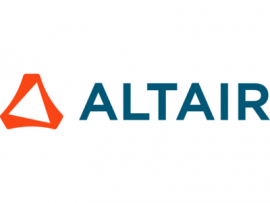
Altair Monarch is a no-code, self-service data preparation solution that allows practitioners to access, clean, blend, combine, wrangle and append data to make data-driven decisions. It offers the benefits of an enterprise-level solution with the simplicity of a self-service tool.
Its powerful algorithms and automated data transformations can reduce the complexity in all stages of your analytics process, allowing for faster insights and better decision-making. In addition, this tool enables users to connect multiple data sources, such as structured and unstructured data, cloud data and big data.
Features
- Enables data extraction from PDFs, Excel workbooks, reports and web pages
- Built-in join recommendation intelligence and fuzzy matching feature
- 80+ pre-built data preparation functions
- Content server module allows users to organize, index, store, search, and retrieve text files and reports
- Automation and reusable workflows
Pros
- Allows users to automate recurring processes
- Feature-rich
- Easy to use
- Supports data extraction from various sources
- Enables users to transform locked and inaccessible data
Cons
- Installation guide can be improved
- Licensing fee
Tableau Prep
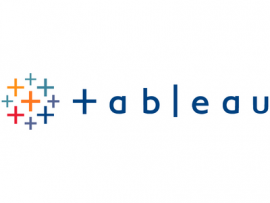
Tableau Prep is a self-service data preparation tool that is designed to make the data cleansing process easier, more efficient and more accurate. It enables users to combine, clean, shape and share their data in one place.
Tableau Prep is integrated into the Tableau analytical workflow so you can get started with analyzing your data quickly. It can perform ETL operations on large volumes of data to prepare it for exploration and analysis in Tableau Desktop. This solution lets users get insights from their data so they can more confidently make decisions.
Features
- Prep builder allows you to combine and clean data for analysis
- Connectivity to multiple data sources on-premises or in the cloud
- Drag-and-drop visualization
- AI-driven statistical modeling and natural language features
- Tableau Prep Conductor for data flow scheduling
Pros
- Intuitive design guides users through the process
- No-code data source combination features
- Advanced visualization capabilities
- On-premises and on-cloud deployment options
- Easily integrates with Salesforce
- Administrative permissions to manage and monitor content, users, licenses and performance
Cons
- Slows down during larger batches of changes
- Support needs improvement
- Data search can be improved
IBM Cognos Analytics
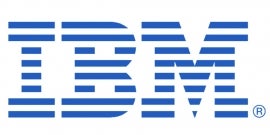
IBM Cognos Analytics is data preparation software that uses the power of AI and the latest in cognitive computing to deliver insight, automation and accessibility. It enables business users to leverage their existing BI tools with pre-built integrations for self-service, on-demand reporting, dashboards and advanced analytics.
With this tool, you can upload your data into the system and quickly identify which data sets are missing or erroneous so you can rectify them. The interface also helps you model your data sets by identifying patterns, anomalies, trends and correlations so you have all the information you need to better analyze your data.
Features
- Integrations with SQL databases, such as Google BigQuery, Amazon Redshift, and other cloud and on-premises data sources
- Automated data preparation and connection
- Administration via Web Interface
- Auto-generated visualizations using drag and drop
Pros
- Drag-and-drop functionality
- Efficient AI assistance
- Interactive dashboards
- Data visualizations that can be shared via email or Slack
- Quick and accurate data recovery
Cons
- Steep learning curve
- Administration interface can be improved
Alteryx Designer

Alteryx Designer is a powerful data preparation solution that allows you to work with your data in various ways. The software also offers an automated approach to preparing, cleansing and analyzing data sets.
Alteryx Designer allows you to analyze and transform structured and unstructured data from a variety of sources. It also provides multiple options for visualizing the prepared data, such as graphs, maps and heatmaps. In addition, the program helps users make sense of their data by using filters, tables and other interactive tools.
Features
- Aided modeling for end-to-end ML pipeline development
- SDKs for embedding the platform’s features into their applications, dashboards and workflows
- Compatible with semi-structured and unstructured sources, including PDFs, text files and images
- Visual canvas to document the analysis process
Pros
- Offers over 300 no-code, low-code automation building blocks
- Integrates with 80+ data sources
- Supports cloud, on-prem and hybrid deployment
- Automated analytics output to over 70 platforms
Cons
- Integration with the Google Cloud Platform can be improved
- Steep learning curve
- Users find this tool pricey
Informatica Enterprise Data Preparation
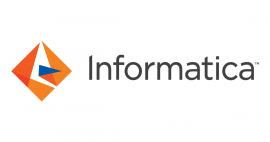
Informatica’s enterprise data preparation solution is an AI-powered tool that gives you the power to prepare, cleanse and enrich your data. It is designed to automate tedious tasks, like managing repetitive jobs and profiling bad records.
You can transform raw unstructured data into a high-quality data set that is ready for analysis or exploitation with just a few clicks. This software can explore and combine data sets from different sources, remove duplicate rows or scrub dirty data without compromising accuracy.
Data engineers, scientists and analysts can spend more time on analyses and insights as they spend less time preparing data sets. The tools also have built-in machine learning models that will make it easy for new users to quickly get up to speed with the capabilities of their enterprise data preparation solution.
Features
- ML-enabled data prep and cataloging with a semantic search data lake format
- Automated data curation and advanced data collaboration
- Support for ADLS Gen2 and data pipeline design
- Import, upload and publish files to Amazon S3 and Microsoft Azure ADLS
- Compatible with structured, semi-structured and unstructured data in CSV, Excel, JSON, Parquet, Avro and text-delimited file formats.
Pros
- Feature-rich
- Support for extensive automation
- Ease of use
Cons
- Complex setup and configuration process
- Some customers find this tool pricey
Talend Data Preparation

Talend data preparation is a self-service, browser-based tool that allows users to import, process and export data across multiple sources. To have high-quality, clean and accurate data for their business needs, organizations must ensure that their data sets are well-prepared before they can be analyzed.
Talent’s data preparation software can identify, filter, extract and transform your raw data into high-quality data sets by removing erroneous records. It also allows you to define users and assign them predefined roles for managing, accessing or performing tasks on specific data.
Features
- Reusable workflow development for data enrichment and analysis
- Role-based access controls, masking rules and workflow-based data curation guarantees that only the relevant data is available to business users
- Data prep collaboration through bulk, batch and real-time data integration
- Rule development and sharing capabilities
Pros
- Data discovery and profiling
- Administrative remote data set management
- Focus on risk and compliance management
- Intuitive user interface
Cons
- Documentation can be improved
- Customer service can be improved
AWS Glue

AWS Glue is a serverless data integration tool that makes extracting and transforming data easier, faster and cheaper. It enables you to discover, connect to and transform your diverse data sources into a unified data set that can be easily analyzed.
AWS Glue automatically generates code for many use cases, including ETLs, batch jobs, streaming pipelines and micro-batch pipelines. In addition, AWS Glue connects to over 70 data sources like Amazon S3 and Redshift Spectrum.
Features
- Drag-and-drop editor for ETL job development
- Support for ETL, ELT, batch and streaming
- Automated data preparation tasks, including anomaly detection and format standardization
- AWS Glue DataBrew allows you to explore and experiment with data from Amazon S3, Amazon Redshift, AWS Lake Formation, Amazon Aurora and Amazon Relational Database Service
- Deduplicate and cleanse data with built-in machine learning
Pros
- Extract, transform and load capabilities
- Automated data schema identification
- Serverless
- Drag-and-drop functionality
- Flexible operations
Cons
- Steep learning curve
- User interface could be improved
- Technical support could be improved
Upsolver
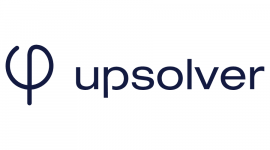
Upsolver is an in-memory data preparation platform that can help you prepare your big data for analytical queries. Upsolver is highly scalable, reducing the time it takes to create reports, produce insights and manage large volumes of data.
The software provides a visual method for building pipelines and is synchronized with SQL commands that you can edit directly. With this design, it becomes easier for people who are not technical experts to develop their analytics pipelines without programming skills or a development team.
Features
- Comprehensive visual interface for pipelines and other components
- ANSI SQL compliant
- Support for over 150 SQL functions and user-defined functions
Pros
- Highly efficient support team
- Enhanced development time
- Able to handle large amounts of data
Cons
- UI can be improved
- Documentation can be improved
What is data preparation?
Data preparation, also called data cleansing or data wrangling, integrates and cleans raw data from different sources to enable downstream analysis, exploration and visualization. It is the process of extracting data from one or more data sources, transforming it into a clean, well-structured format, and then loading it into a target system.
Data preparation software is a solution that automates many time-consuming data prep tasks so analysts can spend more time asking questions and analyzing data. The demand for data preparation software solutions has increased as businesses store more unstructured data in databases, document management systems and other repositories while collecting additional types of structured and unstructured data from various sources.
Key features of data preparation tools
There are many different options for data preparation software on the market, and each solution offers its own unique functions and integrations. Here are some features to look for when deciding what software will work best for you:
- Visual interface: The visual interface is how users interact with the program. Depending on your data preparation needs, it’s important to find software with an easy-to-use and/or self-service interface.
- Easy integration: Integrating new data sets into your workflow is crucial for any data scientist or analyst who wants their research process streamlined. Look for tools that are compatible with many different data types and storage format types.
- Machine learning: You might also want to consider if the software offers machine learning capabilities like predictive analytics, which automate processes and help you to more easily keep track of your data.
- Collaborative editing: Sharing documents online has become increasingly popular. If you’re planning on collaborating with others on a project, select software that allows for document collaboration and role-based data sharing.
- Data governance: When working with sensitive information such as medical records, it’s essential to have strict data governance rules and regulations in place to designate who can access certain files and what they can do with them.
- Security: Data security should be a top concern for anyone purchasing data preparation software. Some providers offer end-to-end encryption and multi-factor authentication, while others integrate with top security solutions.
- Data extraction: Data preparation software should be able to extract information from various sources and formats, including PDFs, databases and spreadsheets. It should also have the ability to connect with other data sources to merge or compare data sets.
Why is data preparation important?
Data preparation is an integral part of the data analytics process. It can help you make sense of your data, making it easier to analyze and act. In addition, data preparation helps you to automate tedious and repetitive tasks, which can save your top data scientists and data engineers a lot of time and energy.
Data that has been prepared correctly will be more useful for answering business questions or developing predictive modeling techniques. As businesses continue to recognize the importance of preparing their data for various business scenarios, data preparation software continues to grow in importance and widespread use.

Leave a Reply